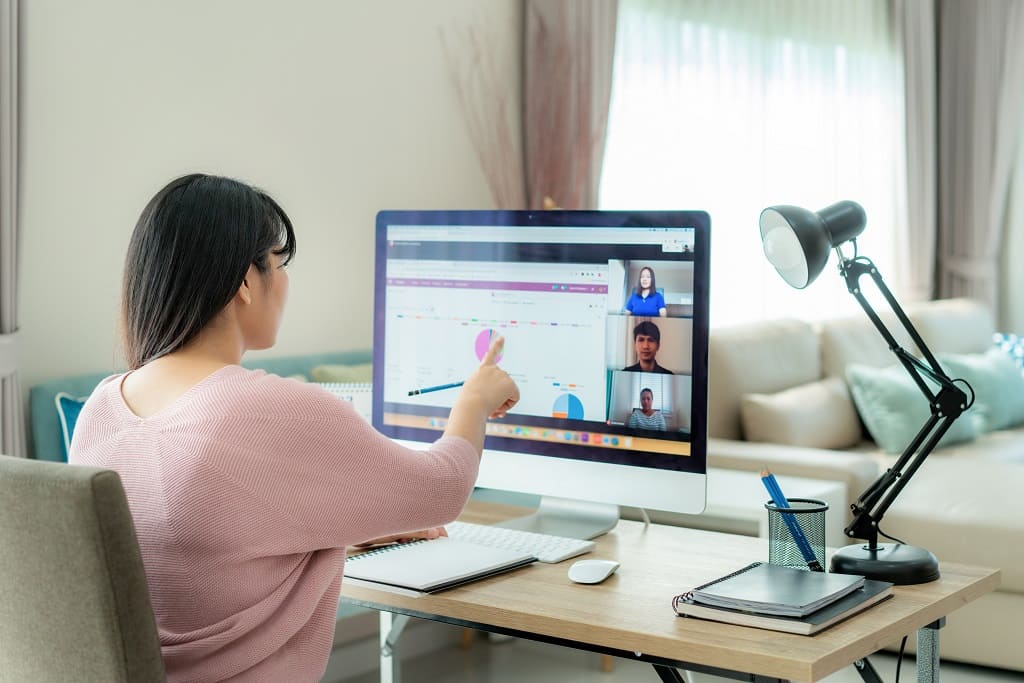Do you usually telework and wish you could be even more productive while meeting your obligations at home? There are many ways to achieve this, and one is through the digital signature, which is key to optimizing the multiple operations faced by anyone who works remotely.
You’re probably reading this article from home, in your usual place of work during your workday. If so, you will be very aware of the importance of having solutions that may help you to adapt better to your work situation and make you more efficient.
Among these digital resources we include the digital signature, which helps to manage documentation in a fast, simple, legal and secure way. We’ll be talking about all the benefits it brings to teleworkers.
What is the situation of teleworking today?
Nowadays it is clear that teleworking has become part of the routine of companies, and the health situation that we are currently facing is largely responsible for this.
As a matter of fact, a study by the Valencian Institute of Economic Research (IvieLab), based on surveys and data from the INE, reveals that telework has been implemented by 34% of employed workers, compared to 4% in 2019, and even below the European average (5.3%).
This report also states that in 2019, 12.9% of executives teleworked, 13.8% of technicians and professionals teleworked, and 1.5% of accountants and administrators teleworked.
This document also sets out the chances that different sectors will opt for teleworking:
- Energy: 30.1%.
- Banking and insurance: 45%.
- Public services: 36%.
- Real estate: 41.5%.
- Industry: 18.2%.
Despite this change, which was totally unexpected a few months ago, the growth of telecommuting does not seem to be a temporary situation for workers and institutions. This statement is supported by surveys such as the one conducted by AxiCom agency, which shows the following:
- 80% of workers are happy teleworking.
- 93% want to keep working from home despite progress towards the “new normal”.
- What they most like about teleworking is:
- Avoiding commuting (86%).
- Making better use of time (63%).
- Avoiding getting up earlier (51%).
- Combining family and work (44%).
- Having lunch at home (31%).
- Enjoying more free time (19%).
How does the digital signature contribute to telecommuting?
For many years now, the digital signature has helped us to work with total technological, time and geographical independence, shaping the concept of ‘’the universal signature’’.
This geographical independence is what makes the digital signature a valuable tool for many different workers who face their working day from home.
We have previously seen how teleworking is potentially useful for various productive sectors and positions within a company. The digital signature is one of the most practical resources for teleworkers, thanks to its versatility, adaptability and security.
Above all, we must highlight the role played by the digital signature in environments where managing documents is key, which contributes significantly to the efficiency of these administrative procedures, besides other benefits, such as security or any benefits derived from the implementation of the idea of the paperless philosophy.

The digital signature enables to close all kinds of contracts, commercial agreements, managing internal documents (budgets, HR, financial, communications, etc.), Administrative procedures, documents related to logistics, etc.
Its implementation in various business operations means that a person can complete them from almost anywhere in the world and in no time. Not only when working from home, but also while we are on the move or if we are away from our workplace and we must sign a document urgently.
This contribution to mobility and availability can be key when getting customers, since we avoid delays that can be detrimental to the company, losing a potential customer or proposals for changes in the contract that may not be favorable to us.
Digital signature, cybersecurity and telecommuting
The growth of teleworking has also led to an increased vulnerability in terms of cybersecurity, resulting from both the use of employees’ personal computers and the networks they work with, which may not be adequately protected.
Furthermore, many employees have not yet adopted basic cybersecurity measures for teleworking to prevent cyber attacks.
In recent months, cyber attacks of all kinds have skyrocketed, especially identity theft. Identity theft is largely the result of phishing or illegal collection of personal data by malicious methods.
To understand the importance of this situation, we can refer to the statements of Helena Rifà, professor at the UOC (Open University of Catalonia), who said that in Spain there have been around 2,600 attacks every day while the majority of citizens have been teleworking.
In order to reduce these risks, it’s advisable to use resources such as virtual private networks (VPN), to keep training employees in terms of cybersecurity, to use digital signatures, etc. The digital signature, regardless of the type of signature stipulated in eIDAS Regulation, can make a strong contribution to the security of digital identity, making it very difficult to manipulate or forge.
It seems like telecommuting is becoming an essential tool for both large corporations and SMEs. Naturally, this comes with a set of digital tools that will make it easier, safer and more productive.
The digital signature is one of the most important solutions, since it speeds up productivity when carrying out multiple administrative procedures. In order to take full advantage of the digital signature, fully capable software applications should be used, like those offered by Viafirma.
Viafirma solutions allow you to sign remotely all kinds of documents, to keep track of the whole process until the end, providing complete security reassurance, and adding all evidence you consider necessary for the signature.
